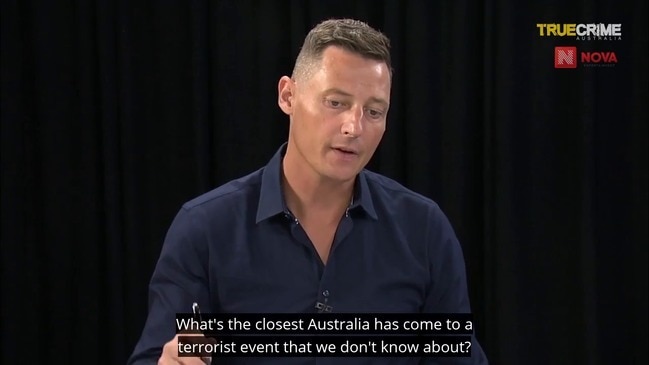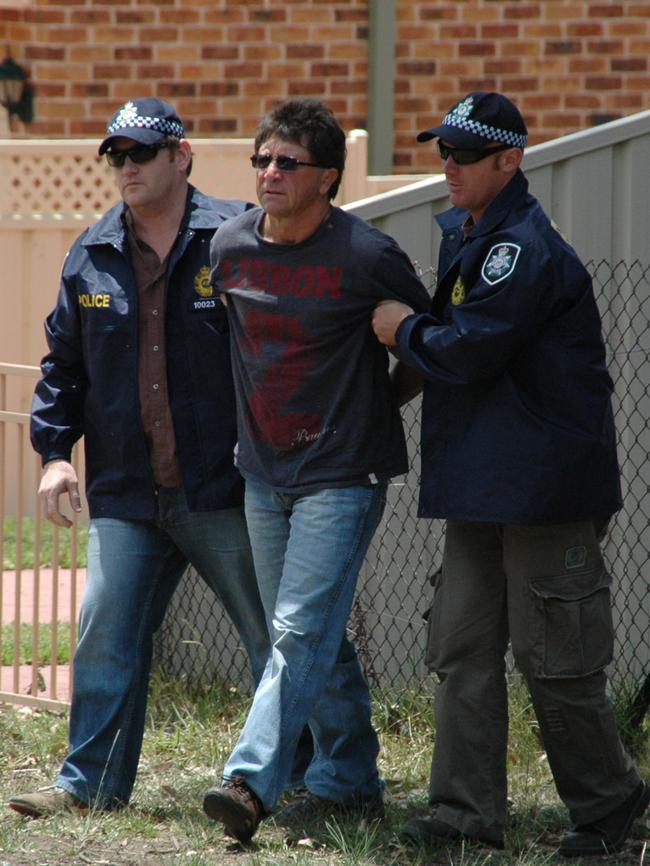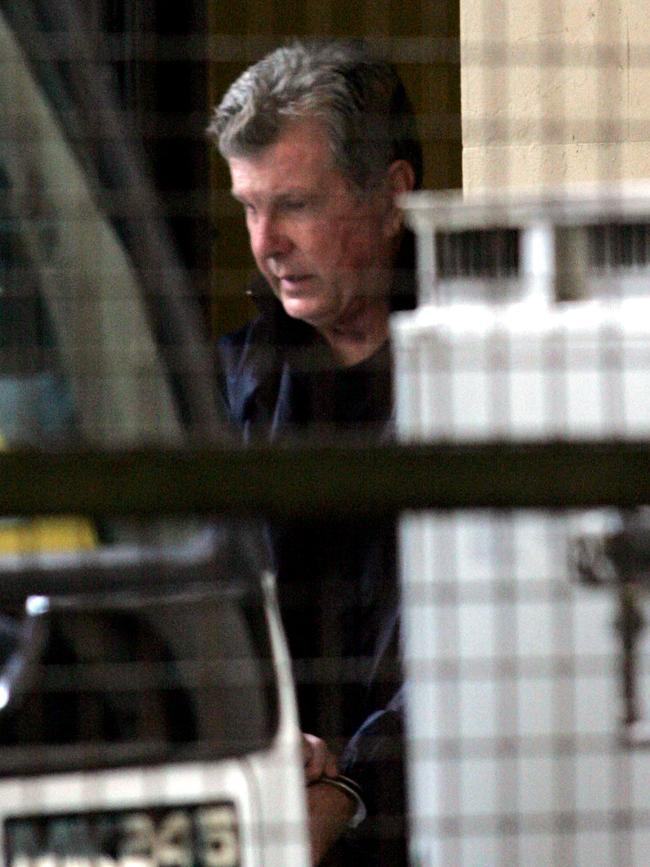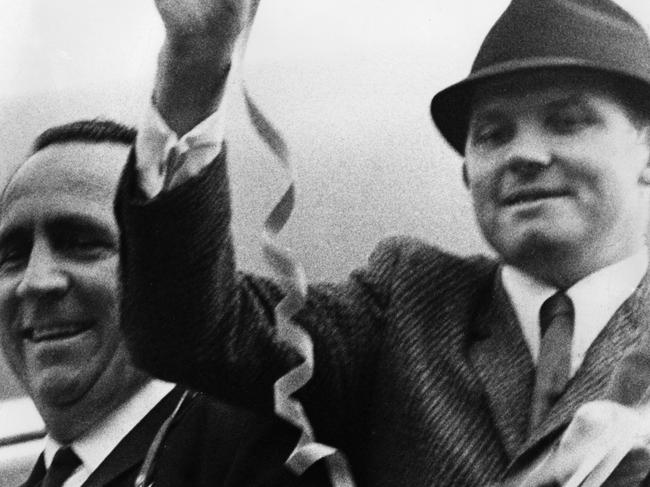Lennie McPherson, Stan Smith, George Freeman: Ex-cop Peter Moroney on chasing old-school crims
They swapped coded messages in newspapers and were experts in shaking off police surveillance. This is how old-school criminals at the top of their game earned a not-so-grudging respect from the detectives on their trail.

Police Tape podcast
Don't miss out on the headlines from Police Tape podcast. Followed categories will be added to My News.
As crims took trains to jobs and left coded messages in newspapers, it was fun to be a gumshoe detective.
There was a grudging respect between law enforcers and their targets and a constant game to outsmart each other.
But the 2000s saw a dramatic change in the criminal mind, says retired NSW Police detective sergeant turned leading criminal university lecturer Peter Moroney, and a suspect would think nothing now of killing a cop or their own kin to ensure their crimes remained untouched.
Before he retired in 2011 after 17 years in the police, including a stint at the NSW Crime Commission as investigations manager, Moroney battled with old school criminals like Les Mara, the former Balmain Tigers NRL star five-eighth, and wharfie Michael Hurley.


Both crime figures were considered the nation’s most successful drug import kings from the 1970s up to when both were arrested in 2005 and subsequently jailed.
There was also Stan Smith, widely considered the godfather of Australia’s underbelly and one of the original national organised crime bosses and hitmen from the 1950s to 1990s.
Peter Moroney: Terror threat from hate-filled sleeper cells ‘increasing’
Suburban shooting: How Strathfield massacre gave rise to terror cop’s career
Smith, Lennie McPherson and George Freeman were regarded by police as the most powerful criminals of the 20th Century — with links to drugs, murders and overseas American mobsters — but they spent little time in jail by remaining one step ahead of the cops.


“Their tradecraft was exceptional and, what I mean by that was their ability to pick surveillance, their ability for discipline … these guys were just very drilled, very rehearsed, very good at what they did,” Moroney said.
“For me, I had, I suppose, the pleasure of working on Stan Smith, who was also a very godly figure in terms of organised crime, exceptional at his tradecraft — in terms of foot surveillance, he was impossible to hold.
“You know, often we would throw a team of six or seven police (at him), and he would come into the QVB (Queen Victoria Building shopping mall), and we call it ‘dry cleaning’. So you’d be dry cleaned in some way, he would pick you from a mile off, no matter what you did, what you wore, what you look like. Stan was very, very good at doing what he did, probably one of the best I’ve ever worked on.”
Moroney, who is now an adjunct lecturer and subject co-ordinator for investigative processes at Charles Sturt University, said the criminals would use multiple cars or catch public transport, be it trains or buses, to evade being tracked.

“They would not often communicate on the phone, but they would have a newspaper and you’d have to watch the footage several times so, for example, (if we were crims) we’d meet in a cafe in which we’d have a chat for 20 minutes, but you’d both have a newspaper and I’d pick your newspaper up as I left and you’d take mine. In the newspaper are certain words circled in articles, really that coded, but that’s why they stayed at the top of their game for so long.”
Moroney also explained how the old-style criminals would throw off surveillance.

“Other methods are, you know, they (the crim) could walk past and look in shop windows … pretend … (to be) looking in the shop, looking at the clothing, but really the reflection of the screens (is) picking up who stopped and who’s watched or who’s looking at you from above … or they’ll take you through a route where it’s very hard to follow. So we (the crim) might take you into the QVB, then we’ll go down two or three lifts, then we’ll go along and I’ll come up and I’ll walk along and I’ll do it again. So if you’re the same one that keeps following me or if I’m pinpointing you … there’s something wrong and I’m off.”
MORE FROM POLICE TAPE
Leap of faith: Dicey move as stolen tank threatens city
‘Won’t save lives’: Bitter pill for drug testing advocates
Contract to kill: Gang’s crazy price on two cops’ heads
Shootings: Inside the crime family feud that terrorised a city
‘He choked me’: Hutchence lover’s shocking revelation
He said there was a code of honour among crooks — they would not retaliate or target police, they would not rat each other out, they wouldn’t take physical action against women or children and they would largely cop it when busted.
“It might sound a little silly or a tad romantic, but they just had a style of operating that you won’t see in today’s world,” he said.
Today’s criminals were more about indiscriminate, wanton violence, more obvious and had little respect for each other or authority, he said.
Police tactics had also changed with more remote surveillance and technology replacing the running around.
Originally published as Lennie McPherson, Stan Smith, George Freeman: Ex-cop Peter Moroney on chasing old-school crims
